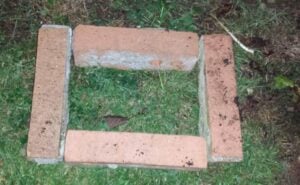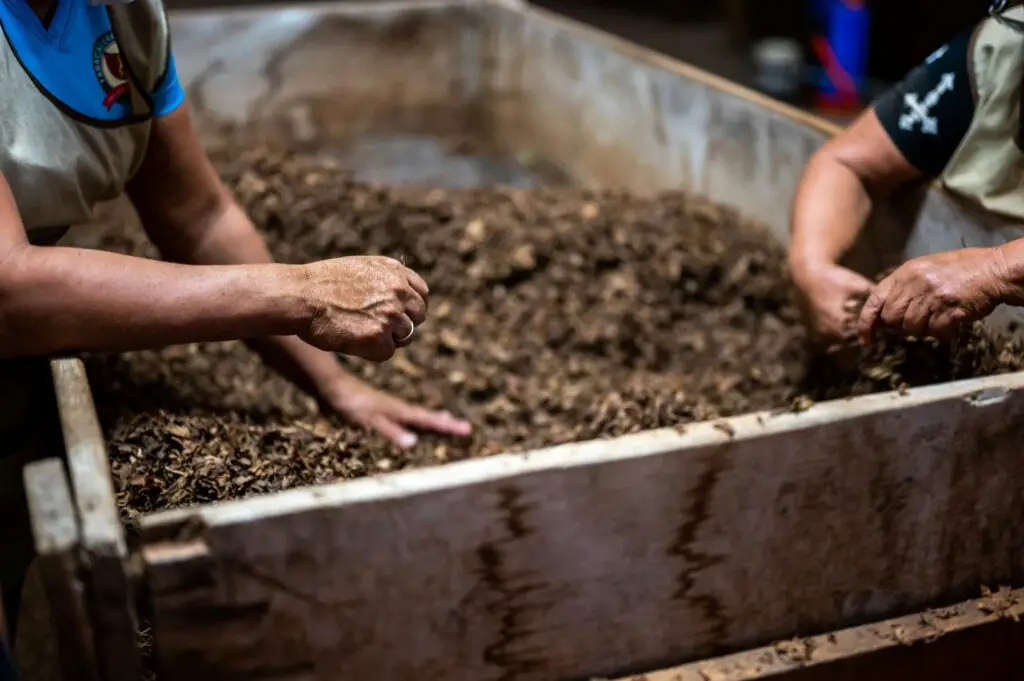Download: What to Put at the Bottom of a Compost Bin: The Essential Base Layer
A successful compost pile requires a strong foundation. The bottom layer of your compost bin plays a critical role in proper composting.
For the fastest, most efficient composting, placing your bin directly on the soil is ideal. This allows beneficial microbes, worms, and other creatures to move freely into your pile, speeding up decomposition.
However, specific situations might require an added base layer beneath your compost bin. Let’s explore when that’s necessary and the best materials to use!
Read: How To Start A Garden From Scratch (Step By Step Guide)
Why Direct Soil Contact is Best
- Enhanced Decomposition: Soil organisms are composting superstars, breaking down your scraps with amazing efficiency.
- Natural Drainage: Soil helps excess moisture drain, preventing a soggy mess.
- Essential Aeration: Airflow is crucial, and a soil base helps maintain that.
Special Situations: When a Compost Base is Necessary
While direct soil contact is ideal, there are a few scenarios where a base layer makes sense:
- Small Apartments: In scenarios where direct contact with the soil isn’t possible, such as indoor or balcony composting, using a base layer or compost bin with a bottom is necessary to manage leachate and contain the compost.
- Waterlogged Areas: If your ground is constantly saturated, a raised base with drainage holes will prevent your compost from becoming waterlogged.
- Uneven Ground: To keep your bin stable on uneven surfaces, you may need to build a simple support base with wood or bricks.
- Collecting Compost Tea: A base with drainage holes elevated above a collection tray allows for the intentional collection of compost tea, a nutrient-rich solution beneficial for plant growth.
Read: How To Make Liquid Fertilizer From Kitchen Waste

Why the Bottom Layer Matters
- Drainage: Excess moisture can lead to a stinky, anaerobic mess. A well-structured base helps water drain properly.
- Aeration: Air circulation is key for the beneficial microbes breaking down your scraps. The right bottom layer promotes airflow.
- Pest Deterrence: A sturdy base layer can help keep out rodents and other critters looking for a free meal.
Best Materials for Your Compost Bin’s Base
- Twigs and Branches: These create air pockets and allow for drainage. Chop them into smaller pieces for faster decomposition.
- Cardboard/Newspaper: Shredded cardboard or newspaper adds carbon (brown material) and soaks up excess moisture.
- Straw or Hay: Adds bulk, promotes airflow, and introduces carbon to your pile.
- Wood Chips/Shredded Wood: Long-lasting and excellent for drainage, but break down slowly.
- Dry Leaves: Abundant, free, and provide both airflow and carbon.
Read: What To Put In A Compost Bin And Steps To Compost Them
Optional Additions
- Hardware Cloth: Lining the very bottom with hardware cloth offers extra protection against burrowing pests.
- Finished Compost or Garden Soil: A handful of “mature” compost or garden soil introduces beneficial microbes to kickstart the process.
What NOT to Put at the Bottom
- Treated Wood: May contain chemicals that can harm your compost.
- Large Rocks or Stones: These hinder airflow and make turning your pile difficult.
- Food Waste: Avoid putting food scraps directly at the base to discourage pests.
Related: How To Turn Compost In A Plastic Bin

Tips for Building the Perfect Base
- Aim for 3-6 inches: Enough for drainage and airflow without being too bulky.
- Layer it up: Alternate coarse materials (twigs, wood chips) with finer ones (leaves, straw) for optimal structure.
- Moisten if needed: If your materials are very dry, give them a sprinkle of water as you build your base.
Frequently Asked Questions
- Should a compost bin have a bottom? It depends on your situation. Direct soil contact is ideal, but in scenarios like indoor composting or waterlogged areas, a bottom with proper drainage is beneficial.
- Where should I put my compost bin in my garden? Choose a location that is convenient for adding materials, has good drainage, and receives partial sunlight.
- Are eggshells good for compost? Yes, eggshells add calcium to the compost but should be crushed to speed up decomposition.
- Should a compost bin be in sun or shade? A balance is best; too much sun can dry out the compost, while too much shade can slow down the decomposition process.
- Are maggots in a compost OK? While unsettling, maggots, particularly from soldier flies, can help break down waste but may indicate an imbalance in your compost.
- What will happen if you leave compost too long? Overly mature compost can lose nutrients but is still beneficial for soil improvement.
Conclusion
By choosing the right materials and carefully constructing your compost bin’s base, you’re setting yourself up for composting success. With proper drainage, aeration, and a little pest protection, your compost pile will transform scraps into nutrient-rich “black gold” for your garden.
Have you faced any unique challenges when setting up your compost bin? Share your experiences and solutions in the comments below!

